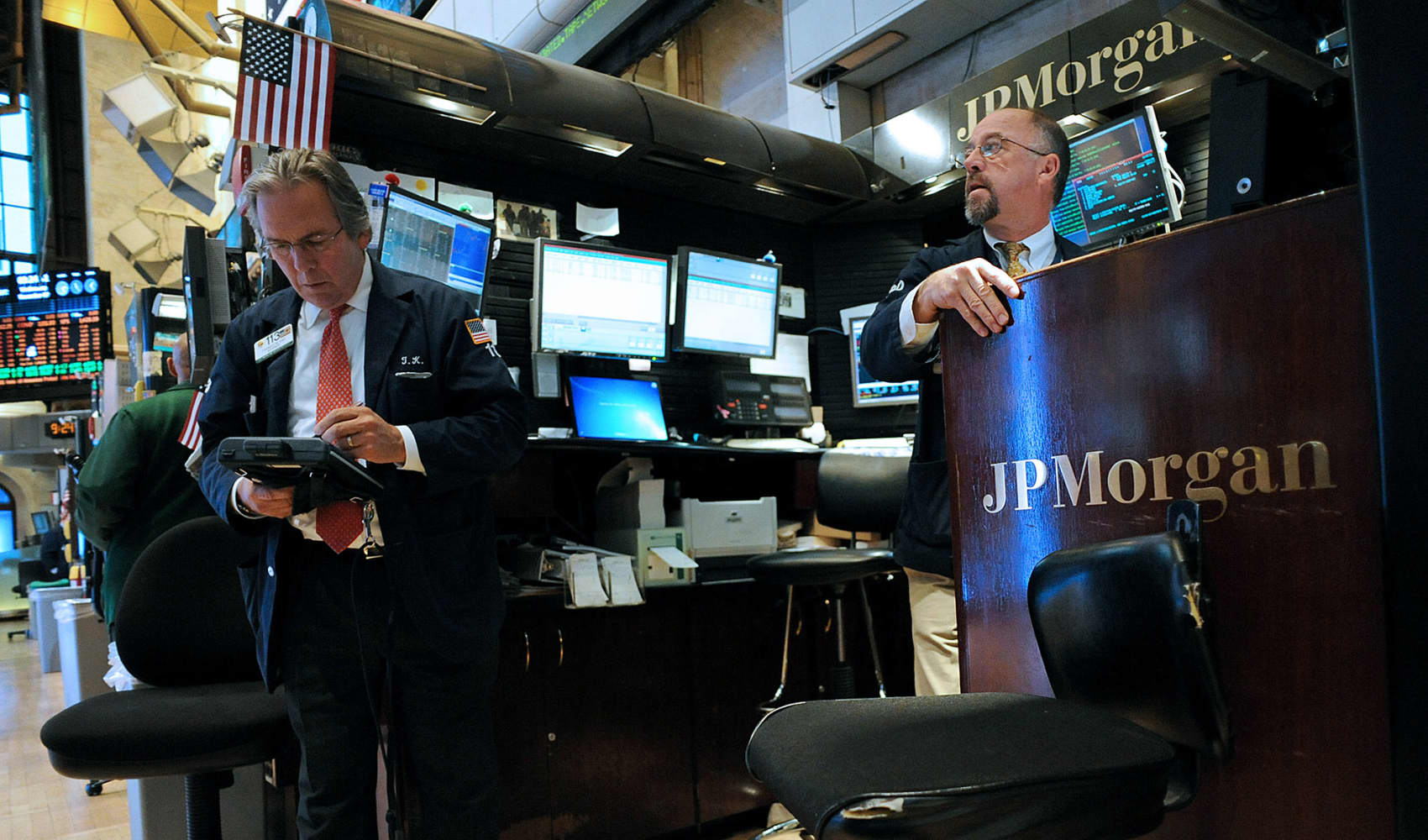Safe Haven? Two JPMorgan ETFs for Risk-Averse Investors
Seeking Shelter? Two JPMorgan ETFs Are Your Safe Harbor in Volatile Seas
Introduction: Navigating the Stormy Seas of Investing
The market can feel like a rollercoaster, can't it? One minute you're soaring high, and the next, you're plummeting downwards. For many investors, especially those nearing retirement or who simply prefer less stress, that kind of volatility is a nightmare. But what if there was a way to stay invested and participate in potential gains, without enduring the full brunt of market downturns? Enter the world of actively managed ETFs, specifically two offerings from JPMorgan that are gaining serious traction: the JPMorgan Equity Premium Income ETF (JEPI) and the JPMorgan Ultra-Short Income ETF (JPST). Think of them as your financial lifeboats, designed to provide a smoother ride during turbulent times. So, let's dive in and see what makes these ETFs a potential destination for risk-averse investors.
Understanding the Need for Defensive Strategies
Before we delve into the specifics of JEPI and JPST, let's address the elephant in the room: why even consider a defensive strategy in the first place? Well, consider your own comfort level. If you're losing sleep over market fluctuations, a more conservative approach might be in order. Defensive strategies aim to preserve capital and generate income, prioritizing stability over aggressive growth. This doesn't mean you'll miss out on all the upside, but it does mean you'll likely experience less downside when the market takes a tumble.
Why Investors are Flocking to Lower-Risk Options
The recent market uncertainty, fueled by inflation concerns, rising interest rates, and geopolitical tensions, has driven many investors to seek safer havens. Nobody wants to watch their hard-earned savings evaporate before their eyes. These ETFs offer a way to stay engaged in the market without exposing themselves to excessive risk. This can be especially appealing to retirees or those with shorter investment time horizons.
The JPMorgan Equity Premium Income ETF (JEPI): A Deep Dive
JEPI is perhaps the more well-known of the two ETFs. Its primary objective is to provide current income while maintaining the potential for modest capital appreciation. But how does it achieve this seemingly magical combination?
Covered Call Strategy Explained
The secret sauce lies in a strategy called covered calls. Think of it as renting out your stocks. JEPI holds a diversified portfolio of stocks and then sells call options on those stocks. When someone buys the call option, they're essentially paying JEPI for the right to buy the underlying stock at a specific price in the future. If the stock price stays below that price (the "strike price"), the option expires worthless, and JEPI keeps the premium. This premium becomes income for the ETF's investors.
How JEPI Protects Against Downside
The premium income generated from selling covered calls acts as a cushion against potential losses. If the market declines, the income received from the options can help offset those losses, providing a degree of downside protection. It's like having a built-in insurance policy for your portfolio.
JEPI's Performance in Different Market Conditions
JEPI tends to perform well in sideways or slightly declining markets. In a rapidly rising market, the gains may be capped because the stocks could be "called away" at the strike price. However, for risk-averse investors, the consistent income stream and downside protection often outweigh the potential for missing out on some upside.
The JPMorgan Ultra-Short Income ETF (JPST): Cash Management with a Kick
Now, let's turn our attention to JPST. This ETF takes a different approach, focusing on ultra-short-term fixed income investments. It's designed to provide a higher yield than traditional money market funds while maintaining a very low level of risk.
Understanding Ultra-Short Duration
The key here is "ultra-short duration." Duration is a measure of a bond's sensitivity to changes in interest rates. The shorter the duration, the less sensitive the bond is to interest rate fluctuations. JPST invests in bonds with very short maturities, meaning their prices are less likely to be significantly affected by rising interest rates.
JPST's Holdings: A Mix of High-Quality Debt
JPST typically holds a portfolio of high-quality debt instruments, such as corporate bonds, asset-backed securities, and commercial paper. These investments are carefully selected to minimize credit risk, ensuring that the ETF maintains a high level of safety.
Why Choose JPST Over a Money Market Fund?
While money market funds offer a safe place to park your cash, their yields are often very low. JPST aims to provide a slightly higher yield while still maintaining a high degree of liquidity and safety. It's a good option for investors who want to earn a little extra income on their short-term cash holdings without taking on excessive risk.
JEPI vs. JPST: Which is Right for You?
So, which ETF is the better choice? It depends on your individual circumstances and risk tolerance. Are you looking for current income and some downside protection, or are you prioritizing safety and liquidity above all else? Let's break down the key differences.
Risk Tolerance and Investment Goals
If you're comfortable with a slightly higher level of risk and are primarily seeking income, JEPI might be a better fit. If your main goal is to preserve capital and earn a small return on your short-term cash holdings, JPST is likely the more suitable option.
Comparing Yields and Expenses
Be sure to compare the current yields and expense ratios of both ETFs before making a decision. These figures can fluctuate over time, so it's important to stay informed. Also, remember that past performance is not necessarily indicative of future results.
Building a Portfolio with JEPI and JPST
These ETFs can also be used together as part of a diversified portfolio. You might allocate a portion of your portfolio to JEPI for income generation and another portion to JPST for cash management and short-term liquidity. This approach can help you achieve a balance between income, growth, and risk management.
Potential Risks to Consider
While JEPI and JPST are designed to be relatively conservative investments, they are not without risk. It's crucial to understand the potential downsides before investing.
The Impact of Rising Interest Rates on JPST
Although JPST invests in ultra-short-term bonds, rising interest rates can still have a negative impact on its performance. As interest rates rise, the yields on newly issued bonds will increase, making existing bonds with lower yields less attractive.
The Limitations of JEPI's Covered Call Strategy
JEPI's covered call strategy can limit its upside potential in a rapidly rising market. If the stock prices rise above the strike prices of the call options, the stocks may be "called away," preventing the ETF from fully participating in the market's gains.
Conclusion: Charting Your Course to Financial Security
In conclusion, the JPMorgan Equity Premium Income ETF (JEPI) and the JPMorgan Ultra-Short Income ETF (JPST) offer distinct strategies for risk-averse investors. JEPI provides income through a covered call strategy, while JPST focuses on preserving capital through ultra-short-term fixed income investments. The choice between the two depends on your individual risk tolerance, investment goals, and time horizon. By carefully considering these factors and understanding the potential risks and rewards, you can determine whether these ETFs are a suitable addition to your portfolio, helping you navigate the sometimes-turbulent waters of the investment world with greater confidence and peace of mind.
Frequently Asked Questions (FAQs)
Here are some frequently asked questions to help you better understand JEPI and JPST:
- What is the expense ratio for JEPI and JPST?
The expense ratio can vary slightly over time. It's best to consult the official JPMorgan Asset Management website or the ETF's prospectus for the most up-to-date information. Typically, both ETFs have reasonable expense ratios, reflecting their active management strategies.
- How often does JEPI distribute income?
JEPI typically distributes income on a monthly basis. This consistent income stream can be particularly attractive to retirees or those seeking regular cash flow.
- Are JEPI and JPST suitable for retirement accounts?
Yes, both JEPI and JPST can be held in retirement accounts such as IRAs and 401(k)s. They can provide diversification and income within a tax-advantaged environment.
- Can I lose money investing in JEPI and JPST?
Yes, like all investments, there is a risk of loss. While JEPI and JPST are designed to be relatively conservative, they are not guaranteed to preserve capital. Market fluctuations and other factors can affect their performance.
- How do I buy shares of JEPI and JPST?
You can buy shares of JEPI and JPST through any brokerage account that allows you to trade ETFs. Simply search for the ticker symbols (JEPI and JPST) and place an order to buy the desired number of shares.

